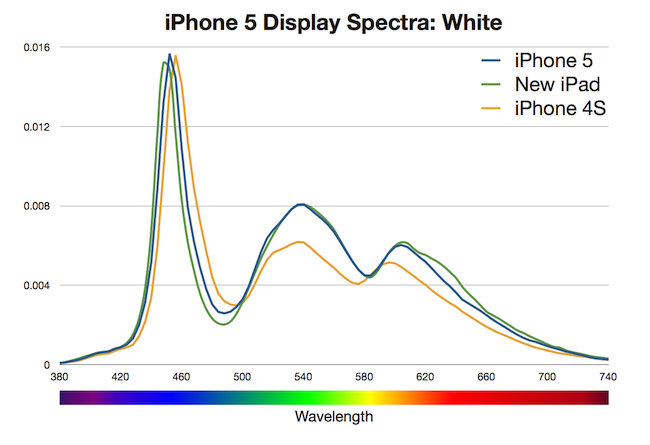iPhone 5 Display Vs. Spectroradiometer
According to Apple, the iPhone 5 offers 44% more color saturation than the iPhone 4S. Jeff Yurek of dot color decided to put the claim under direct scientific inspection, and found out (through a spectroradiometer) that, indeed, the display is remarkably improved.
The 44% more color claim for the iPhone 5 is the same claim Apple made for the new iPad. As with the iPad, increasing the color performance of the iPhone 4S by 44% of NTSC 1953 gamut, measured using the CIE 1931 color space, would result in color saturation matching the sRGB color standard. Using these standards as the goal posts, we measured the iPhone 5 at 70% of NTSC 1953 in CIE 1931, a 39% increase from the iPhone 4S, which measured at 50%. That’s 5% less of an improvement than Apple’s 44% claim and just 99% of sRGB (measured against the sRGB primaries). While 5% less might seem like a big deal, getting to 99% of sRGB is a major feat and will result in tremendously noticeable color improvement in the phone. Additionally, color filters are notoriously difficult to manufacture.
I am no display expert, but from personal experience I can say I see a definite improvement of blues and greens on the iPhone 5. Just by looking at the App Store, Phone, and Messages icons on an iPhone 5 and iPhone 4S, you can see that the colors are more vivid and “real” on the new device. Yurek’s scientific measurements put this into better context with factual evidence.
Also worth linking is the photo set of retinal neuroscientist and photographer Bryan Jones. He took macro shots of the iPhone 5 and iPhone 4 to compare color quality, then put them both under a microscope to take a look at the pixels. Check out his results here.



